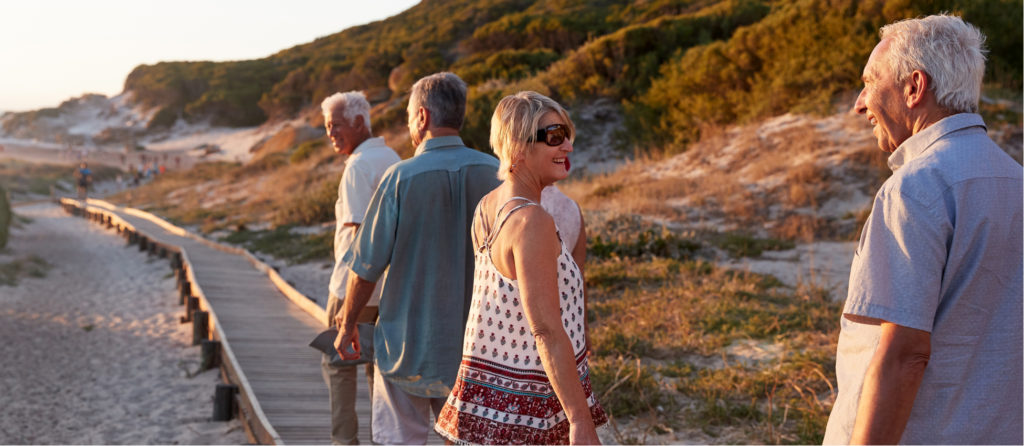Beverley Watts journeys into the foothills of the Himalayas on an escorted Jules Verne tour into Punjab and Himachal Pradesh
India has changed. Since I first visited in 1988, arriving overland on the old hippie trail, it’s become one of the world’s largest economies. The software industry is thriving, but the country is still immensely rich in cultural experiences and as fascinating as ever.
This sensory abundance, this otherness, is intoxicating. Heading from Amritsar airport to our hotel, scooters whizz past with kids squeezed between their parents, cars overtake on the inside and cows saunter across the road. Lorry signs warn: ‘Don’t Honk’, but nobody seems to get overexcited and sounds their horn.
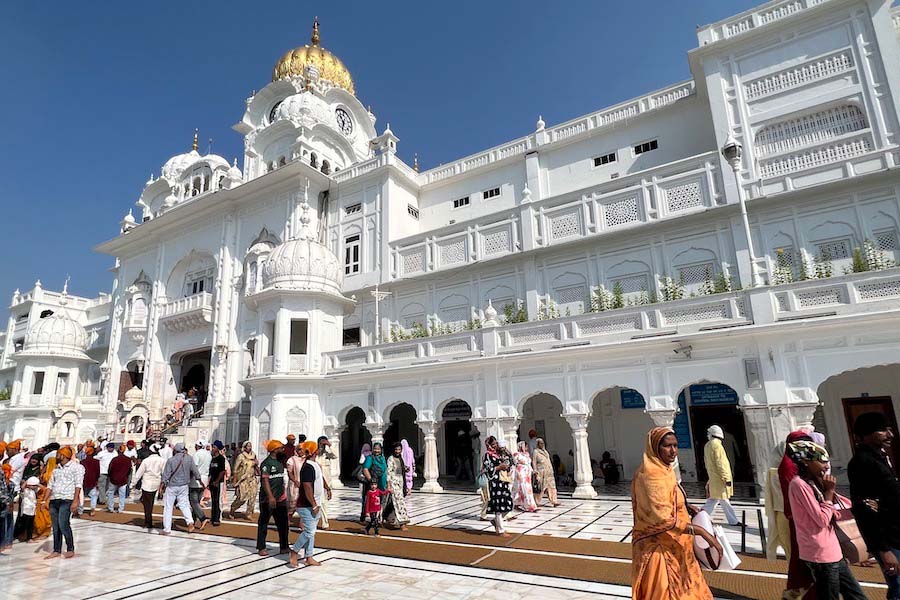
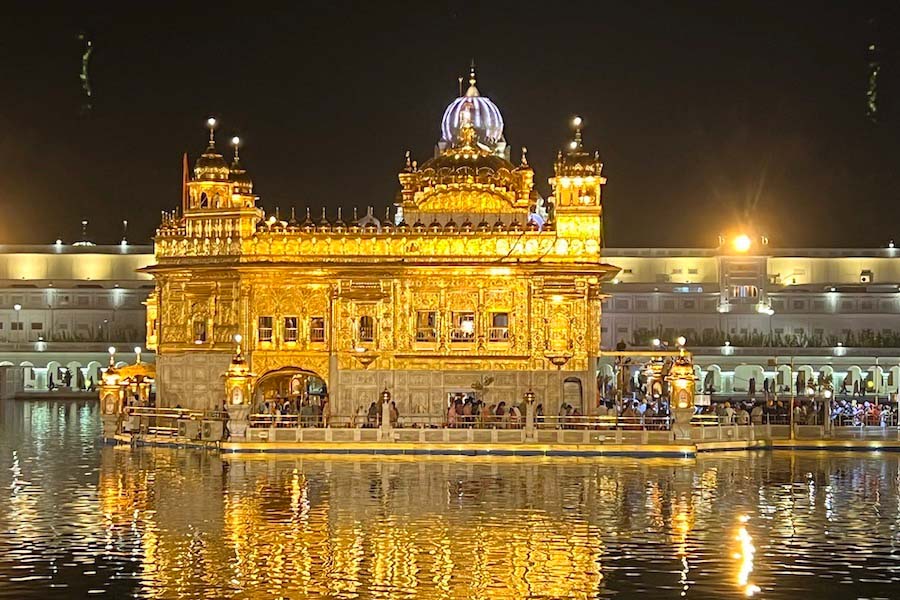

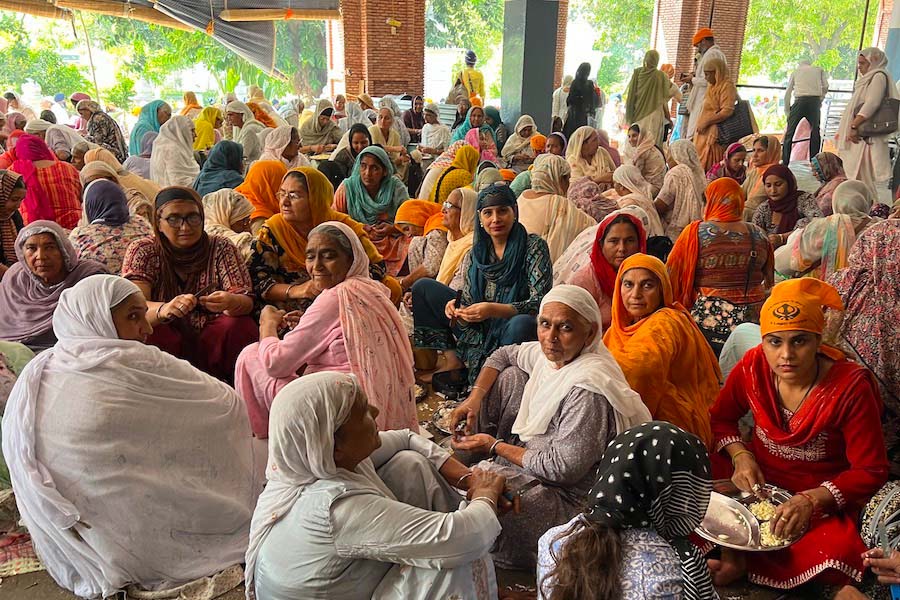
Amritsar’s Golden Temple
In a tradition that goes back centuries, Hindu, Jain, Sikh, and Buddhist wives daub a red dot on their forehead, the bindi. I’m anointed with scarlet kumkuma powder (turmeric mixed with pickling lime) as a greeting, almost as soon as I arrive. I’m not married but the bindi also signifies ‘the third eye’ to help the wearer access inner wisdom. I’m all for that.
Sikhism is the predominant religion in Punjab and Sikhs wear the turban as a sign of faith. Amritsar’s Golden Temple is an important spiritual site. Its glittering 24ct-gold-leaf domes give off a magical light and the surrounding shallow pool is believed to have healing powers. We pad around in bare feet, our heads, shoulders and arms respectfully covered with shawls.
Many thousands of pilgrims arrive every day and everyone in need is fed. A community kitchen is funded by donations and run by volunteers, assembling an astonishing number of meals. A row of rattling machines flip out countless chapatis but the vegetarian food is mostly prepared by hand. We watch transfixed. The washing up – each metal platter rinsed four times – is also a labour-intensive production line.
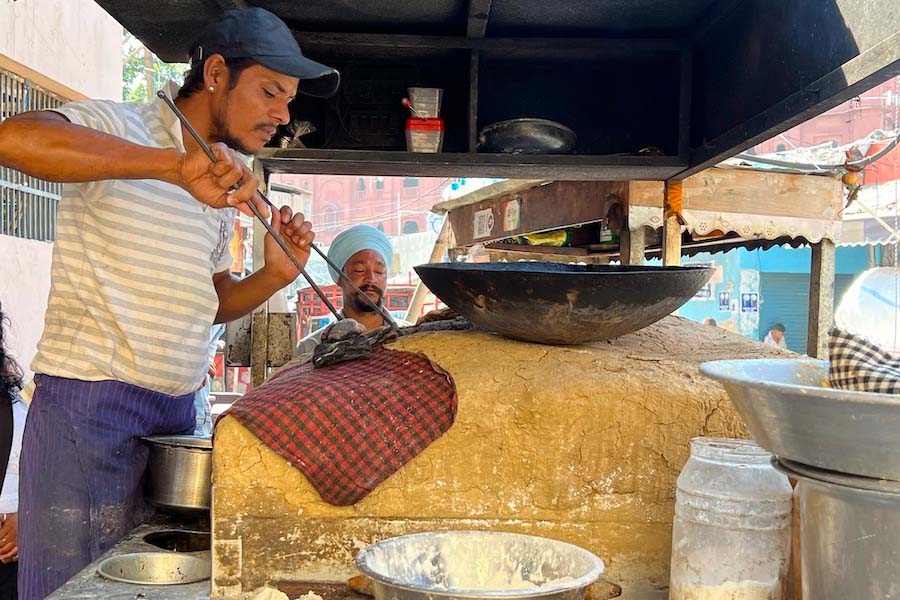
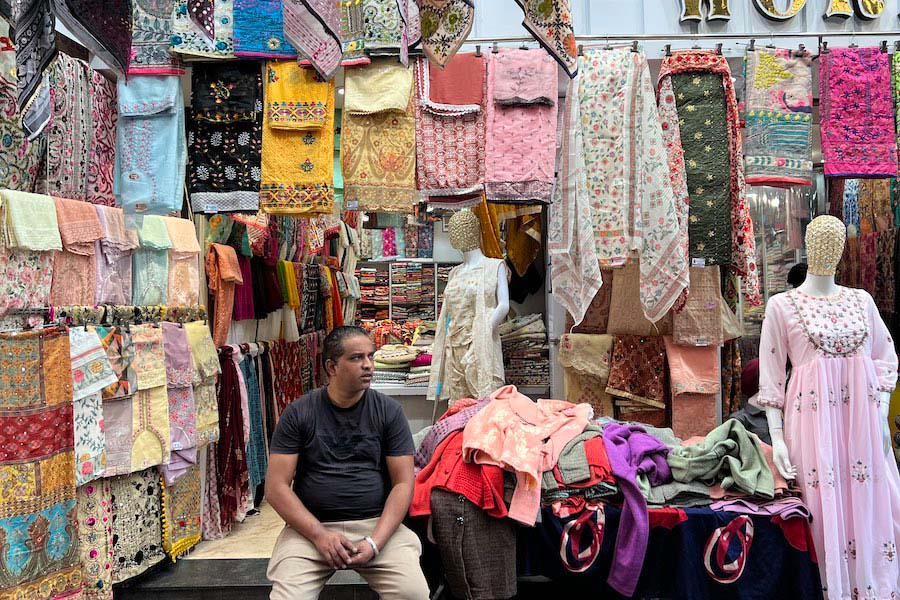
For our own lunch we try some street food, stopping at stalls selected by Sikh guide Jagroop Singh. Amritsari Kulcha is a flatbread filled with spicy mashed potatoes, delicious with paneer cheese fritters. The beautiful wooden fretwork on Amritsar’s oldest buildings can still be spotted on the highest windows, designed to capture the breeze.
End of the British Raj
The British Raj ruled India from 1858 and the bullet holes at Jallianwala Bagh, a historic garden and memorial, remain as a reminder of a terrible massacre in 1919. A peaceful crowd, protesting about the arrest of pro-independence activists, were fired on by British troops. The eventual end to colonial rule in 1947 cracked India apart and Amritsar’s Partition Museum documents the turmoil of this time.
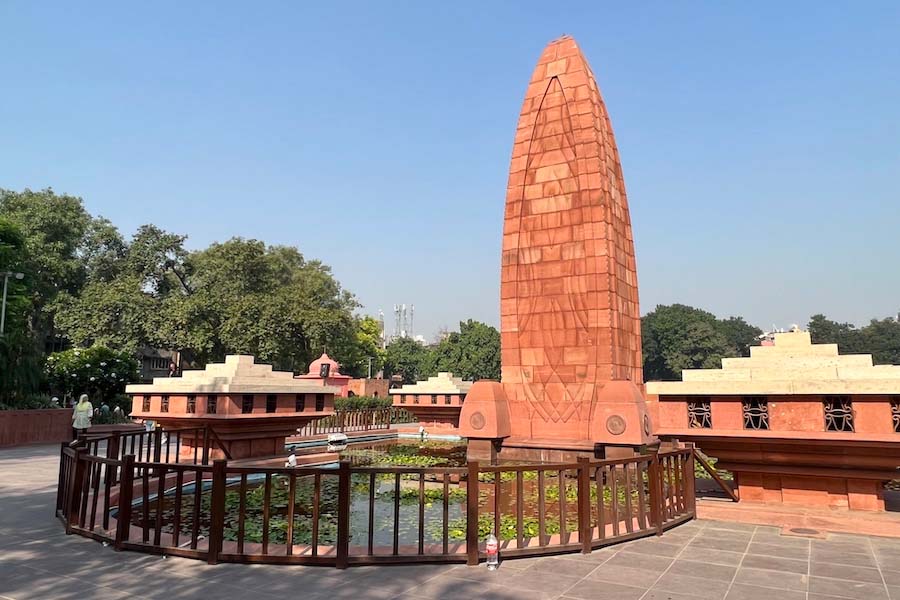
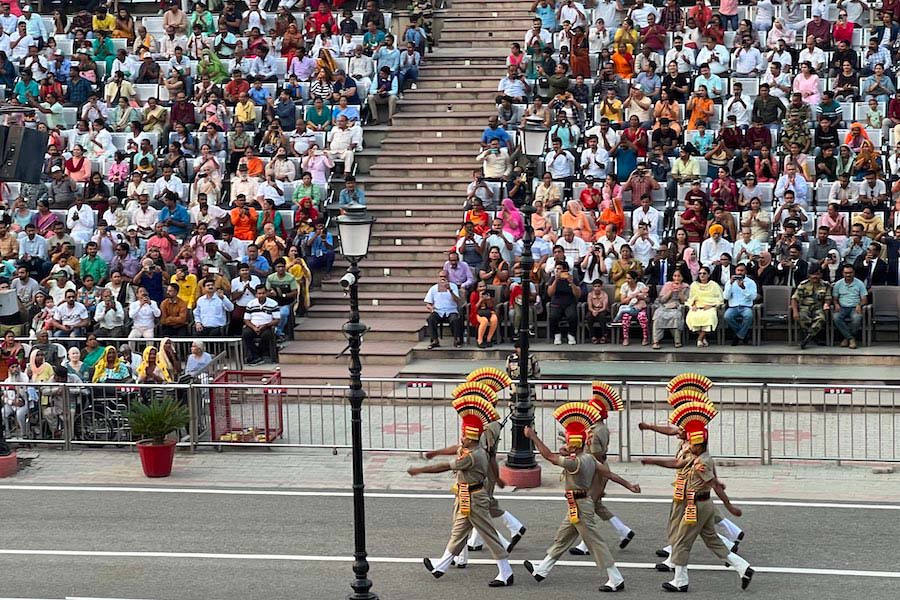
Punjab was split between India and Pakistan and now at the Attari-Wagah border ceremony each evening, security forces on both sides of the frontier perform a ritual parade. The enthusiastic audience jumps up and down noisily before the guards strut back and forth and finally shake hands.
Sikhism was founded in the 15th century and Sikhs believe in the equality of everyone. Women as well as men can wear turbans and in Anandpur Sahib, the Holy City of Bliss, the spring Hola Mohalla festival is a huge draw for devotees with skilled horse riding, Sikh martial arts, music and poetry. Nearby we learn more at the Virasat-e-Khalsa Heritage Centre. Its museum is an excellent place to immerse yourself in the story of Sikhism with historical costumes and dramatic murals.
At Kikar Lodge, a nature retreat in former tiger territory, we enjoy a jeep safari and discover that birdlife is thriving, red-naped ibis and bright blue kingfishers abound. Growing by the side of the trail, the feathery Indian Squirrel Tail shrub is one of Mother Nature’s medicines. With anti-inflammatory properties, it’s long been used to help heal wounds.
Hindu gods and Buddhist monks
Leaving Punjab in a fleet of Toyota taxis for the twisting mountain roads of Himachal Pradesh, our Jules Verne guide, Surendra Rajawat, tells us about Hinduism – believed to be 5,000 years old and followed by an estimated 966.2 million Indians in the subcontinent.
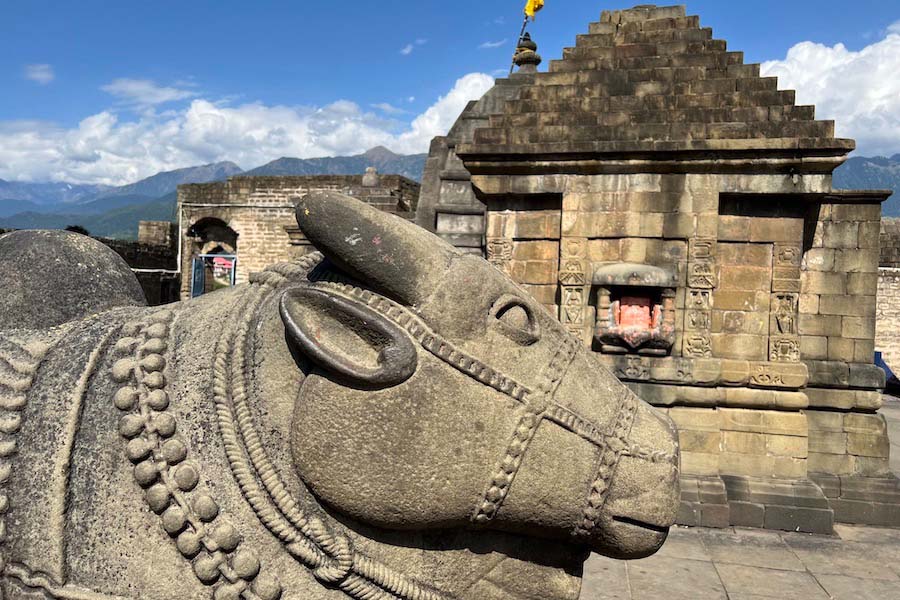
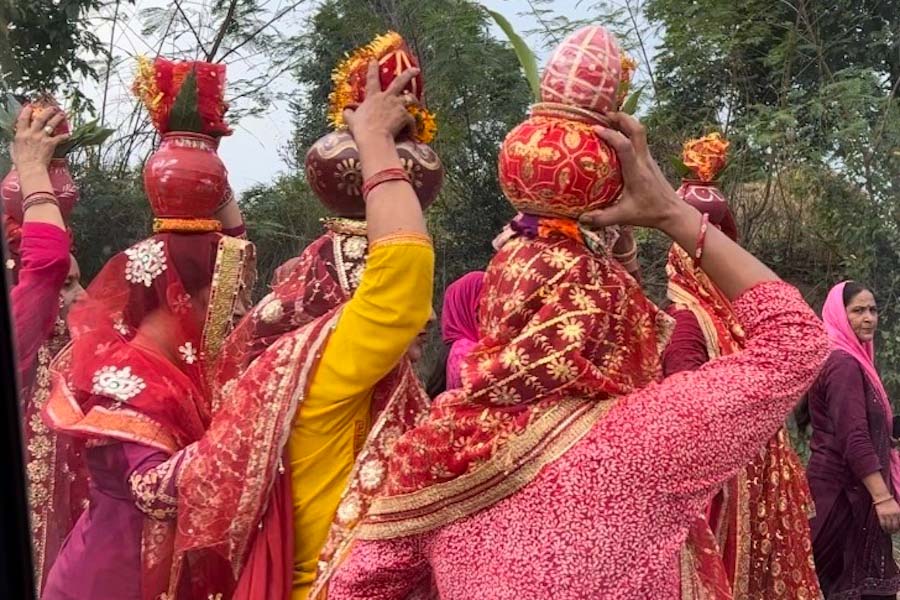
The Baijnath Temple, in the Kangra district, has carved pillars depicting some of the multiple Hindu gods and goddesses. Lord Krishna is recognisable by his peacock feather headdress and Lord Shiva is draped with a snake. We join worshippers who leave gifts of food for their chosen deity and share their deepest hopes and dreams.
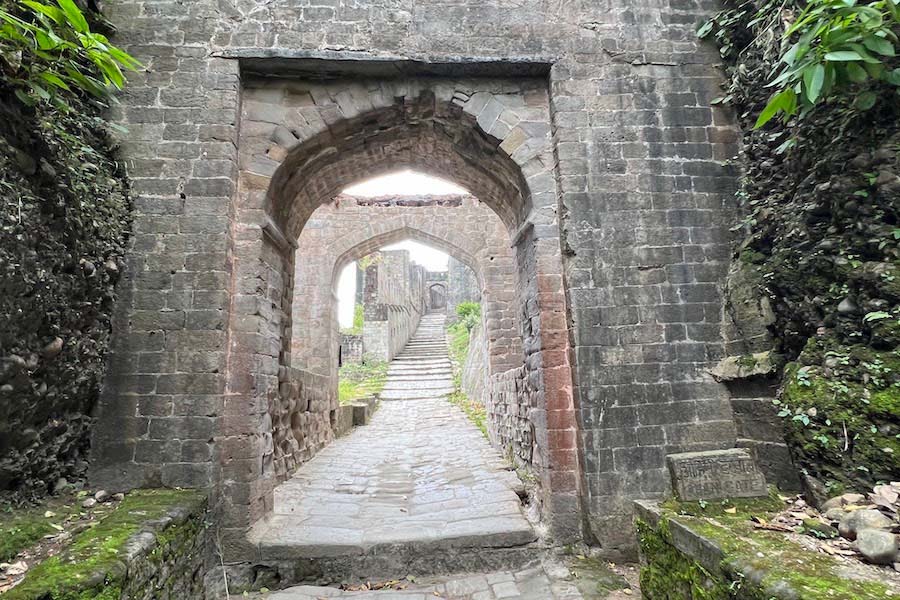
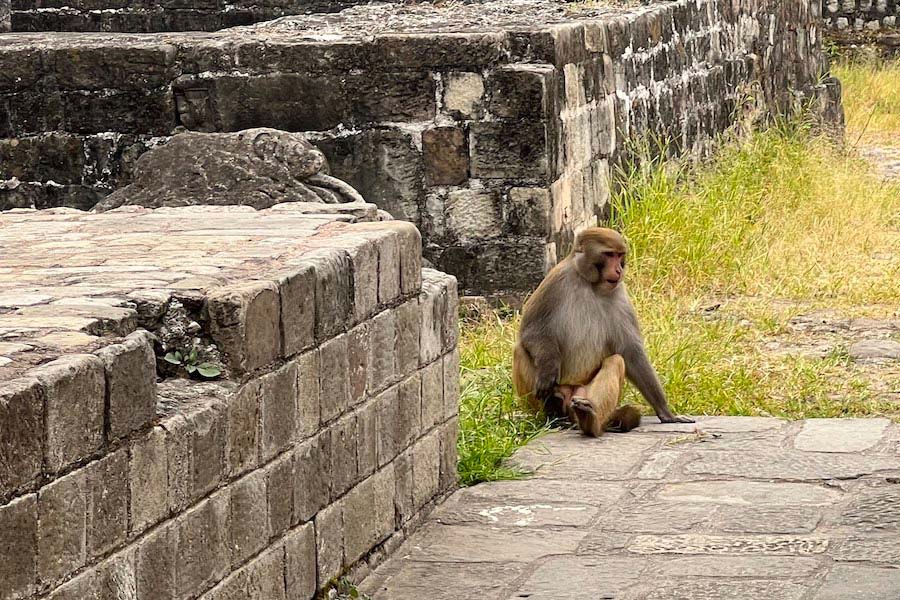
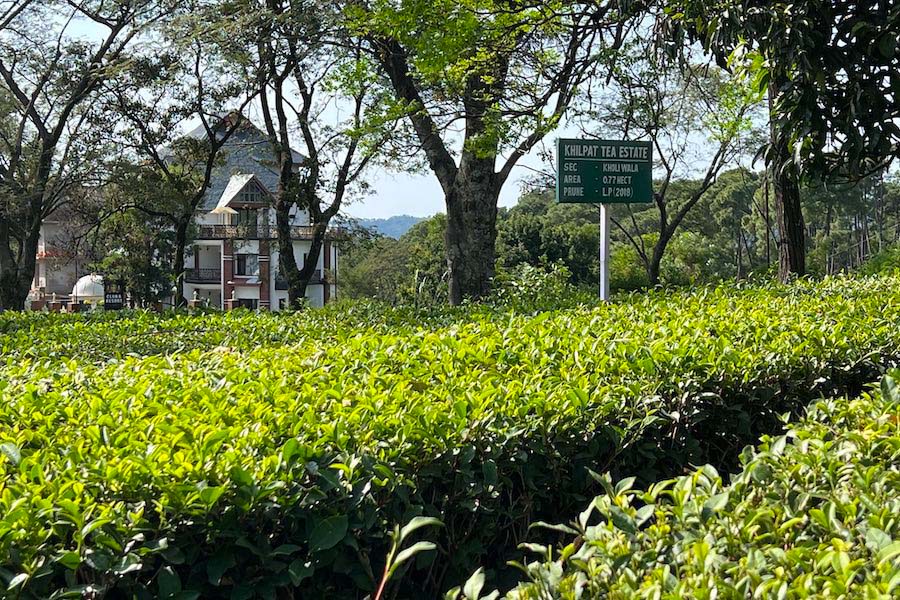
To the west, Kangra Fort – an ancient fortress inhabited by monkeys – still stands, despite damage in a 1905 earthquake. The Kangra Valley, fed by a network of mountain streams, is ideal for leafy tea plantations. We stay at the Rakkh Resort where the water bottles in our rooms are copper and filled with mineral water, fresh from the mountainside. Tested regularly, its sweet to the taste.
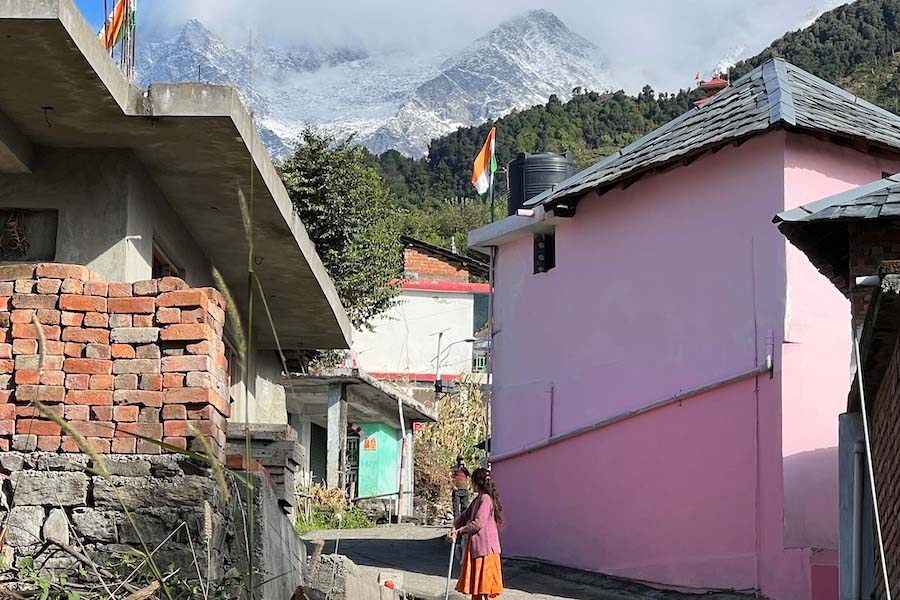

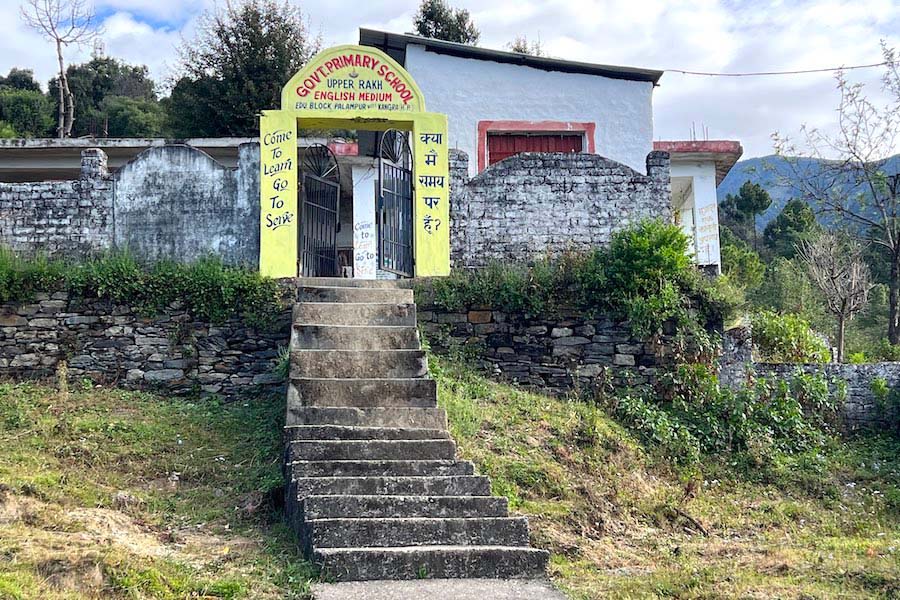
The neighbouring village of Rakh, backed by a snow-topped Himalayan ridge, grows wheat for the hotel and grinds it in the community watermill. Cattle are stabled on the ground floor of traditional mudbrick homes and families live above.

Dharamshala, the main city of the valley, has been home to Tibet’s Dalai Lama since 1959 and the steep streets are full of Buddhist monks in burgundy robes. Rows of stores offer a selection of Tibetan handicrafts, so we shop for embroidered shawls, silver jewellery studded with turquoise and exquisite singing bowls.

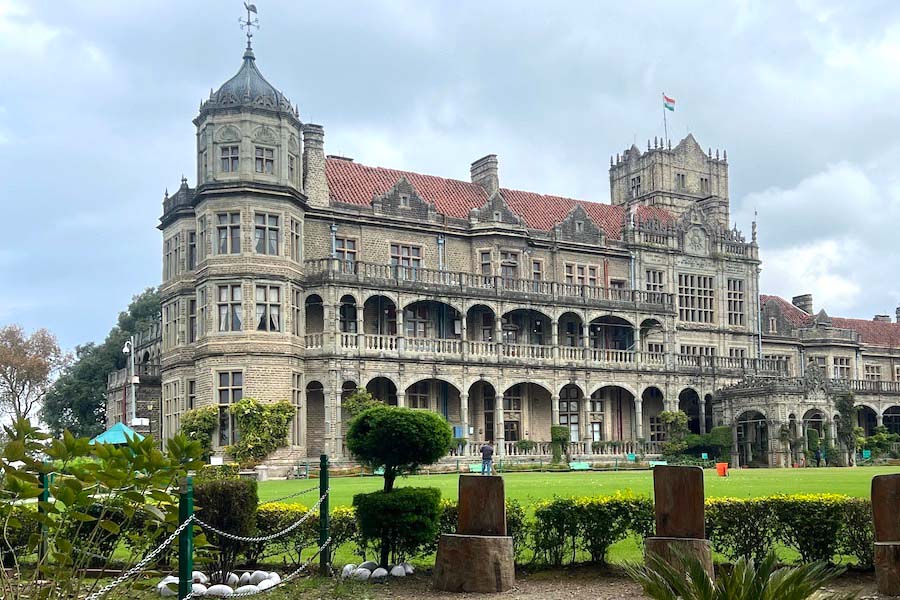
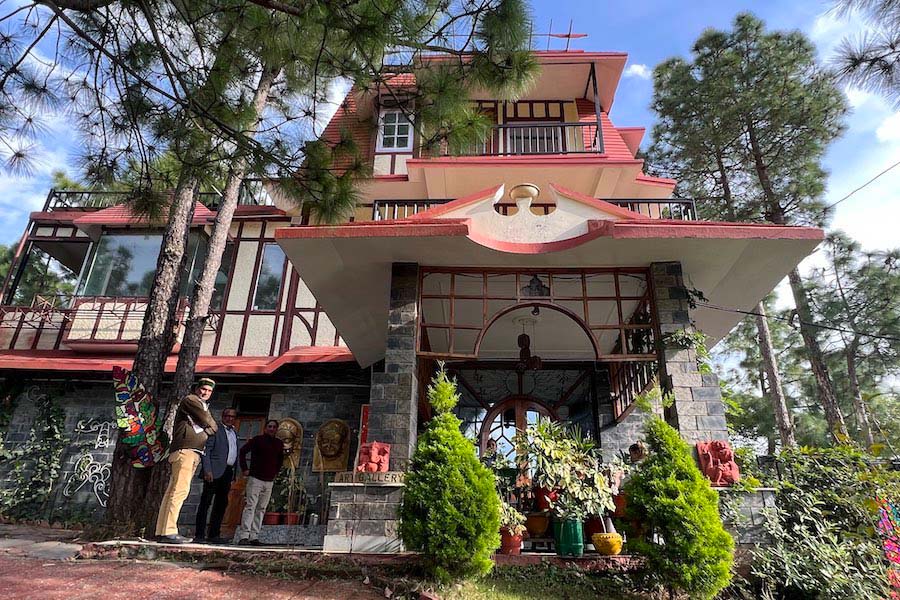
Then it’s down to Shimla, with its colonial era architecture. Often used by Bollywood film production crews that don’t have the budget to go to Europe, it was once a tiny hamlet. In the late 19th century, the cool summer climate attracted the British Viceroy of India and the imposing Jacobethan-style Viceregal Lodge – today a research institute – was completed in 1888. Adorned with Belgian chandeliers and Burmese teak, the building was the first in Shimla to get steam-powered electricity and once had 800 staff.
At the Sanat Art Foundation, half an hour outside town, artist and academic Him Chatterjee is an expert on Indian art, its mythology and cosmic power. He welcomes visitors to his studio home and gallery, a calm hideaway and creative centre. Here you can nurture your own expressive soul in a painting workshop, inspired by the region’s jagged peaks.
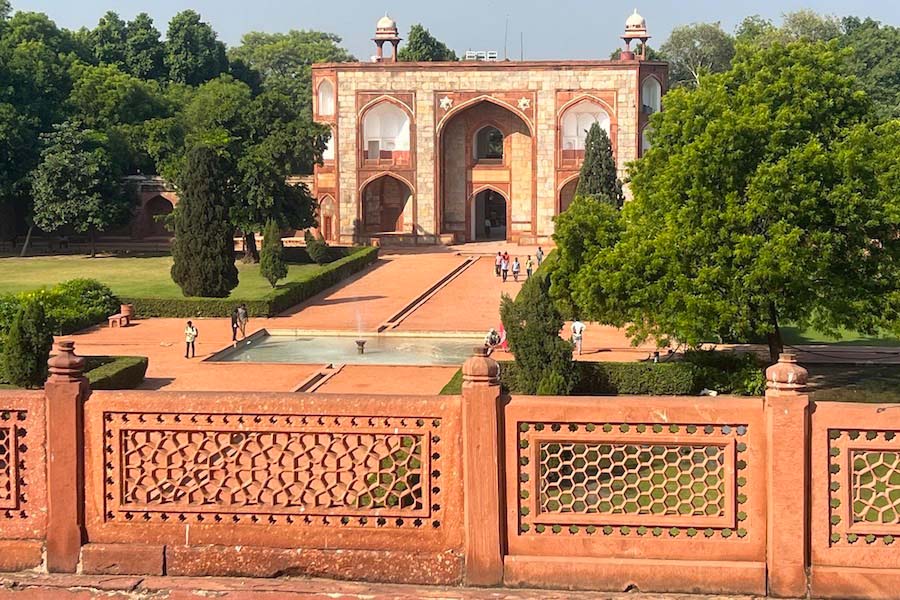
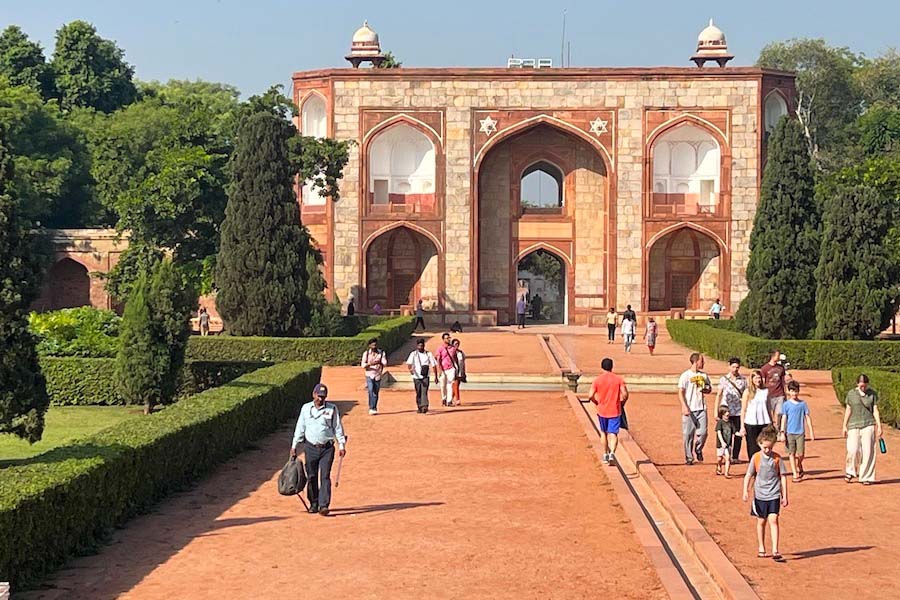
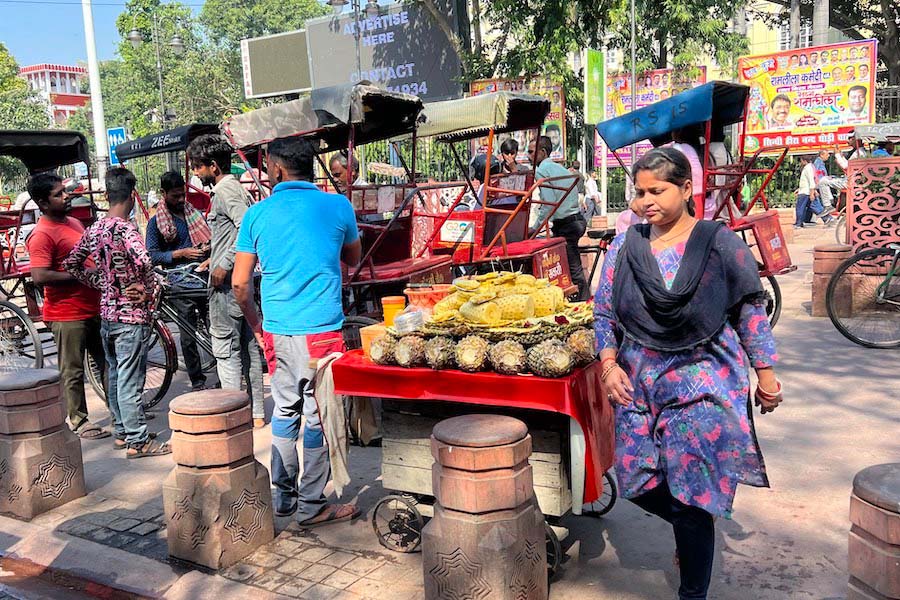
Delhi’s authentic secrets
Due to a long monsoon season, we aren’t able to leave Shimla on the scenic narrow-gauge Toy Train, so instead take the comfortable Shatabdi Express from Kalka to Delhi, staying at the sumptuous Taj Mahal hotel, New Delhi.
On a No Footprints tour, we visit Humayun’s Tomb, a marvellously preserved Mughal dynasty monument from 1572. The Persian-influenced red sandstone and white marble complex has grounds that were originally landscaped to look like the paradise garden described in the Quran.
Half an hour away, young tech entrepreneurs are sipping Starbucks coffees and ordering KFC at the modern CyberHub leisure centre, but in Old Delhi I take a rickshaw ride through Chandni Chowk market where it’s like stepping back in time. I’ll have a glass of Masala Chai (spiced tea) please and samosas served with chickpea curry. Just heavenly with dollops of yogurt and chutney.
Plan your stay
Jules Verne’s 11-night Sikhs & Exiles tour is priced from £2,195 pp. The Jules Verne India’s Golden Triangle tour, 9 nights from £1,895 pp, includes the No Footprints Five Senses experience in Delhi.
An overnight stay at Kikar Lodge’s secluded forest haven is part of Jules Verne’s Secret Himalayan India tour, 20 nights from £3,695 pp.
Rakkh Resort in Himachal Pradesh is committed to sustainability with craft and hiking activities.
The Taj Swarna in Amritsar, the Taj Theog Resort & Spa (above Shimla) and the Taj Mahal, New Delhi offer luxury hospitality.
Our Silver Travel Advisors have more information and can help you book your trip to India, call 0800 412 5678.
